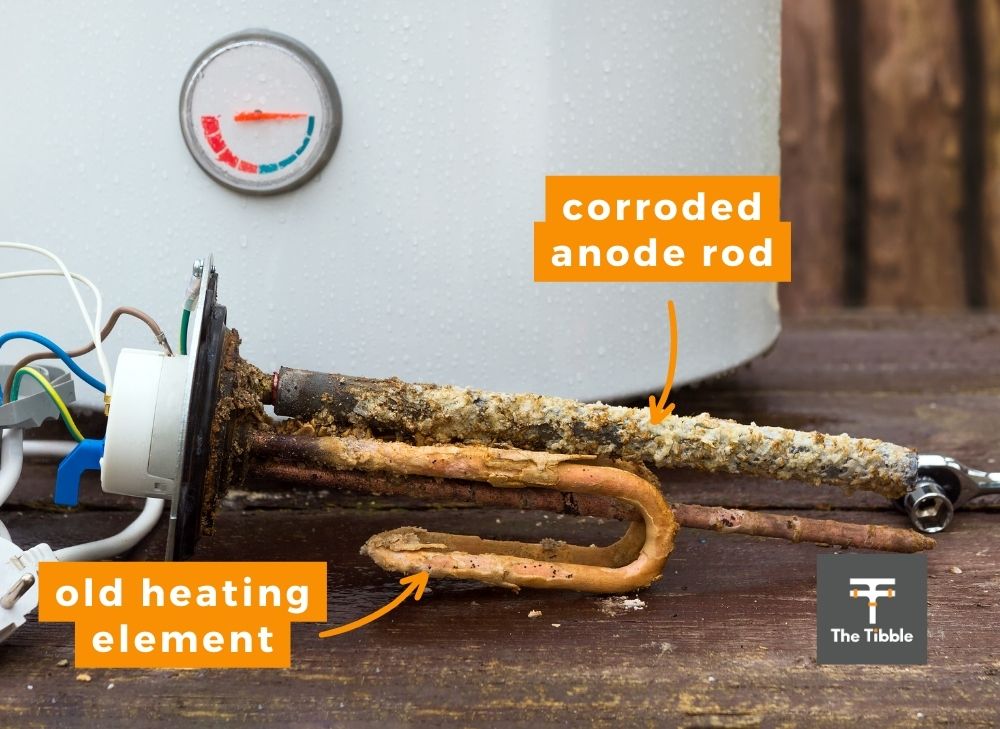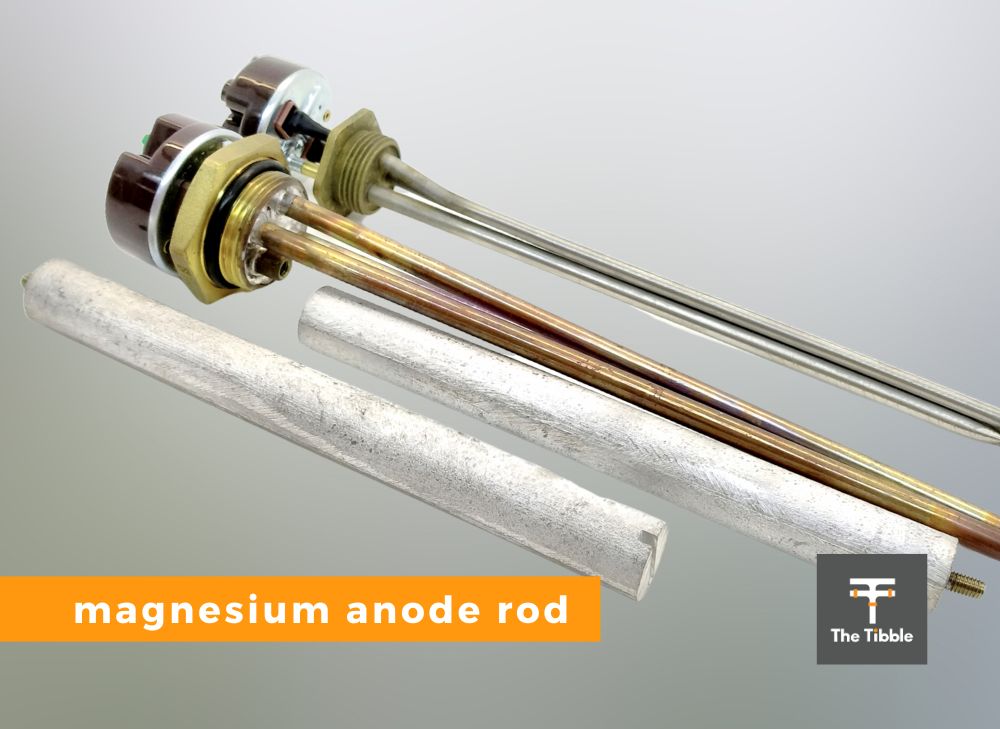Gas H2o Heaters: Do They Necessitate Anode Rods?
Have y'all always wondered why big steel ships that travel through the saltwater oceans make non rust later a few years? The solution to forestall this involves using sacrificial anodes positioned strategically around the send’s hull. The same applied science is used inwards gas H2O heaters.
Most gas heaters call for anode rods to prevent the other tank’second other metals from rusting. Gas H2O tanks made from stainless steel are not prone to rust in addition to make not demand the protection provided past anode rods. Most anode rods are sacrificial components that “attract” the galvanic rusting process.
Most gas H2O heaters use anode rods to foreclose the other metals in the tank from rusting.
Through the processes described inwards this article, the anode rods play a sacrificial office by corroding instead of the other metals.
Most Gas Water Heaters Do Need Anode Rods
While gas H2O heaters will go without anode rods, their lifespan will live shortened, and they will begin to rust within three to four years.
Ultimately the tank will be compromised by the rust, in addition to it will get down to leak or even outburst if the pressures are high plenty.
To prevent rusting, sacrificial anode rods are installed inwards the tank. As the advert suggests, these depression-price components are “sacrificed” for the greater skillful of the gas water heaters.
Which Gas Water Heaters Don’t Need Anode Rods
If the gas H2O heater is constructed of a textile such every bit stainless steel, which does non rust, it does not ask to live protected past an anode rod.
This way stainless steel gas H2O tanks do non demand regular rust checks.
Despite this, it is always a adept thought to monitor the equipment in your dwelling to ensure it is working properly. The same is truthful of stainless steel gas H2O heaters, where it is important to check the pipage connections to ensure no leaks exist.
What Are Anode Rods?
Without an anode, the gas H2O tank will rust, as well as the metal plating volition be compromised, ultimately leading to the tank failing together with starting to leak.
Most gas H2O heaters are made of stainless steel, together with the heating elements are made from copper.
Anode rods human action equally a “sacrifice” in addition to corrode instead of the other metals incorporated within the gas water heater.

It way that every 3 or 4 years (depending on the H2O composition in addition to the climate), the anode rods involve to be replaced; nonetheless, this is substantially cheaper than replacing the entire gas water heater.
How Do Anode Rods Work?
To empathise how this happens, it is of import to recollect that when two pieces of metal are attached to each other, either physically or through an electric current, and so immersed inwards water, they get down to part similar a battery.
This is true in saltwater together with freshwater, which incorporate impurities.
Left long enough inward this condition, a modest electric current flows betwixt the ii surfaces.
This causes the metallic to get-go to hand upward pocket-size pieces (metal ions) of itself to the water. As indicated previously, it industrial plant peculiarly good inward seawater because of the common salt content and inward “fresh” H2O because of the impurities similar Fe, limestone, together with other minerals.
The giving upwardly of the metallic ions results in a procedure called galvanic corrosion (rust) together with, if left unchecked, volition result inward the sides of the gas H2O heater becoming compromised.
To forbid galvanic corrosion from acting on the gas H2O heater surfaces, a tertiary type of metal is introduced into the organization inward the form of the anode rod.
The anode rod extends into the heart of the gas H2O heater.
The role of the anode rod is to human action as a sacrificial anode within the gas water tank. In then doing, it prevents the remainder of the gas water tank surfaces from starting the process of galvanic corrosion.
Why Do Sacrificial Anodes Work So Well?
When 2 dissimilar metals (equally per the galvanic scale) are immersed inward an electrolyte (water together with its contaminants) in addition to electrically connected to a metal conductor (inwards this instance, they are connected to each other), the metal which appears lower downward on the galvanic scale will live galvanically corroded.
This volition keep for as long equally the less noble metal is intact.
With all science, in that location is a hierarchy of all materials together with processes. This is truthful with the galvanic series.
A metal’second position on the galvanic serial is determined by the electrochemical potential and the “nobility” of the metallic or metallic alloy.
For sacrificial anodes to function effectively, the metallic they are intended to protect must be positioned higher on the galvanic serial inwards relation to the fabric to live sacrificed (the anode.)
The sacrificial anodes are sparse metallic rods coated inward zinc, aluminum, or magnesium. These metals sit down at the bottom of the galvanic serial (to the lowest degree noble.)

Being lower on the galvanic series agency that these materials are more than active metals than the remainder of the parts they protect.
- Magnesium generates some 1.6 volts.
- Aluminum generates roughly ane.one volts.
- Zinc generates or so i.05 volts.
Based on this, Magnesium anodes are the nigh effective; yet, they will rust faster.
The anode oxidizes (corrodes) and protects the residue of the metal. Ultimately, the anode volition live completely consumed before the rest of the H2O tank metallic corrode.
What Are Electrical Anode Rods
Some anodes part amongst minor pulses of electric electric current, which increases the attraction of the impurities to the anode and shields the residue of the metals inward the tank.
Electrical anode rods are non sacrificial as well as will continue to go nether near weather.
Do The Anode Rods Ever Need To Be Replaced?
Anode rods volition ultimately fail due to the effects of galvanic corrosion.
At this betoken, they stop to function, and the gas water heater is at hazard because the other metal volition commencement to corrode.
Signs that an anode rod has passed its sell-past engagement include the following.
- The gas H2O heater is older than 5 years.
- The aerators on the faucets look to block upwards more frequently.
- There is a slimy gel-like kernel inside the H2O filters in addition to aerators.
- The hot water begins to odor like a “rotten egg.”
- The H2O temperature is non well controlled, beingness hotter or colder than you desire, which could be caused past a broken or failing heating element.
When these symptoms look, it is fourth dimension to alter the anode rod too and so proceed to protect the gas water tank.
Summary
In well-nigh gas H2O heaters anode rods are essential to ensure that the tank does non rust in addition to starting time to deteriorate. These demand to live changed periodically to ensure they supply the necessary protection.
References
https://cathwell.com/galvanic-series/
Komentar
Posting Komentar